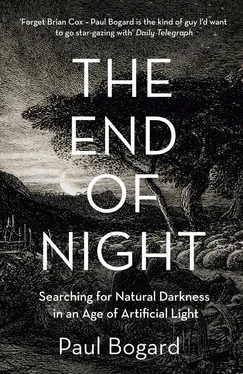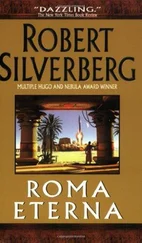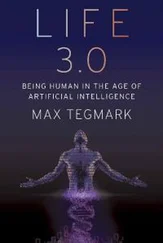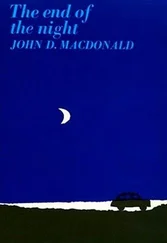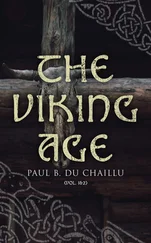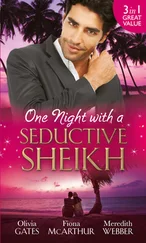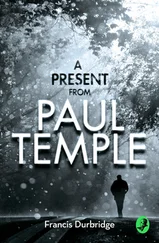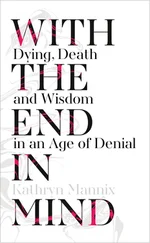1 ...8 9 10 12 13 14 ...19 I’m first on the Strand—one of London’s oldest and most well-known streets, on a cold December night, maybe 25 degrees—and then alone on Waterloo Bridge at quarter to three. West down the Thames, Big Ben and the Houses of Parliament stand dark against the gray charcoal London sky. Big Ben’s round white face stands lit, as does the blue London Eye, the Ferris wheel on the river’s south bank. Above, I count twenty-four stars. Behind, looking east, amid apparent smoke and steam, the unlit silhouette of St. Paul’s Cathedral, the view a close copy of the famous photograph from the Blitz. That is, except for the skyscrapers going in behind, and the intense white lights off Blackfriars Bridge coming straight into my eyes.
Dickens describes the Thames as having “an awful look, the buildings on the banks were muffled in black shrouds, and the reflected light seemed to originate deep in the water, as if the specters of suicides were holding them to show where they went down.” The river has claimed countless lives over the centuries, including those of eighteenth-century slaves jumping overboard to avoid their fate and six hundred passengers drowned in a paddle steamer sinking in 1878. I walk down the stony bank to the edge of the black water, the Thames feeling up close like a still wild presence at the heart of the frantic modern city. Tugs and barges and boats lie anchored, a yellow light in one illuminating a man coiling rope. Though the river still sees activity from police boats, fireboats, boats used by tourism companies, and—most significantly—barges used for civil engineering projects, times are changing quickly for the men who work on those barges that ply the Thames at night. In Night Haunts, Sukhdev Sandhu quotes a man who remembered that, when he was a child, “there were so many boats on the Thames that it was possible to skip from boat to boat all the way from one side of the river to the other without getting wet.” These bargers, Sandhu writes, now “move through a river that appears to them to have been razed and colonized by outside forces, its soul abducted.” Sandhu argues that while “Londoners take the Thames for granted … the bargers, especially after midnight, feel as though they have been unshackled from the city, its soot and heaviness, its noise and overbearing solidity. They breathe in the fumes of freedom, bathe in the tranquillity of the dark waters through which they gently move.” It wasn’t long ago, says Sandhu, that “the nocturnal river was swathed in darkness; now, even at its farthest reaches, car parks and grand shopping complexes are sprouting up, their light leaking out onto the Thames and denting its darkness.”
Back west past Waterloo Bridge, I pass through an arcade of shops that was packed when I ran through this morning, my path a zigzag splash through puddles and past thick coats and couples and three-generation families. The embankments—this south side called “the Albert” and the north side called “the Victoria”—were built in the nineteenth century to control flooding by forcing the Thames to keep a set path rather than continuing its ancient seasonal weave. Now, this south bank is utterly deserted but absolutely lit. The only people I see are one security guard and one garbage collector. I make my way up and over Westminster Bridge, continuing along the South Bank toward Lambeth Bridge, looking across at Parliament. Until midnight, amber floodlights illuminate the Houses of Parliament, but in the middle of a winter’s Sunday night, the old building stands dark from tip to tail. No lights in the windows, steam from only one among the many chimneys. With the clouds behind lit by streetlight glow, the building and towers stand in silhouette as though lit by moonlight centuries ago.
Dickens writes of crossing over Westminster Bridge and visiting the abbey, where he sensed “a wonderful procession of its dead among the dark arches and pillars.” I feel the same way looking across the river at Parliament. By daylight, even floodlit, this is an old building in the present, but with its floodlight makeup removed, and placed in silhouette against the winter’s sky, centuries fade and shadows come alive. Looking across the water, I imagine its ghosts coming down to the rooftop of the building in which they once walked. Whether you’re in London or in the countryside or in your own bedroom, turning out the lights—especially the electric lights—can take you back in time.
From Westminster I walk to the corner of St. James’s Park and around its curving boundary on Horse Guards Road, behind the Cabinet War Rooms and No. 10 Downing Street, crossing over The Mall and jogging up the steps past an enormous granite column topped by the bronze statue of a tremendously resolute Duke of York, and stop on Carlton House Terrace. If you want to see a street lit by gaslight, this is a good one—with no electric lamps in the way, the gas illuminates the street in soft golden flare. I continue on to Pall Mall and take a right down this famous old street, past rows of distinguished buildings, an open second-story window revealing a wall of ancient books—brown, crimson, black at the spine—and two third-story windows, drapes drawn, dim glow behind.
I think of Virginia Woolf and her essay “Street Haunting: A London Adventure,” from 1927, in which she claims “the greatest pleasure of town life in winter” is “rambling the streets of London.” Her story tells of using the excuse of needing to buy a pencil in order to get out and walk. “The hour should be the evening and the season winter,” she says, because “the evening hour … gives us the irresponsibility which darkness and lamplight bestow.” By irresponsibility, I like to think she means freedom. “How beautiful a London street is then,” she writes, “with its islands of light, and its long groves of darkness.”
I would like to have seen that London or, better yet, to see a modern London with “long groves of darkness” blooming with subtle “islands of light.” Some eighty-five years after the publication of Woolf’s essay, her equation has been reversed. Now, long groves of electric light give way only periodically to pockets of gaslit beauty or darkness. My visit here is the first time I experience a feeling that I’ll have in several other cities and towns, especially in Europe, so rich with centuries of built history: how much more beautiful the nights could be here if more attention were paid to light and darkness. It’s not that the London lighting doesn’t have its moments—Parliament from across the Thames, for example—but in general the lighting relies on floodlights plastered against building walls, with the result a somewhat patchy appearance, especially compared to the subtle and more uniform lighting I will see in Paris. The opportunities for creating and enhancing the beauty of London at night are enormous—its gaslights and human history give it such an advantage over most cities in world—but for now these opportunities remain, for the most part, unrealized.
From Pall Mall to Trafalgar Square by 3:55, the “look right, look left” painted at intersection crossings, the black cabs slowing by, a row of sleeping red double-decker buses, Admiral Nelson immortalized with spotlights. Then, once again, the Strand. And lastly, Covent Garden.
This was the old market of London for hundreds of years, first outside the city walls, then at the city’s edge. Dickens closes his essay by visiting “Covent-garden Market” which he finds on market morning “wonderful company. The great wagons of cabbages, with growers’ men and boys lying asleep under them, and with sharp dogs from market-garden neighbourhoods looking after the whole, were as good as a party.” The sense of a party in Covent Garden has a long history. An engraving from 1735 titled “Drunken Rakes and Watchmen in Covent Garden” features said rakes in tricorner hats, with swords drawn, their arms around ladies. A dog barks in the corner, lanterns lie smashed on cobblestones, the watchmen enter with their staffs a-swinging, giving one rake a serious kick in the behind, while a lady plugs her man’s nose, and two link boys—who before gaslight “linked” travelers in the street from one lighted location to the next—stand holding their flames in the corner, clearly amused by ridiculous adults. What’s interesting, aside from the crazy scene, is that in the background, modern-day Covent Garden is clear. Beyond the swooning face of a petticoated dame, you almost expect, if you look closely enough, to see the Apple Store logo in the shop window under the colonnade. The church with the clock, the clock tower, the passages, the cobblestones, they’re all here. The description states, “He and his drunken companions raise a riot in Covent Garden,” and funny enough, 275 years later, at just past 4:00 a.m., he and his drunken companions are still here, bellowing about Chelsea football as they lead each other, arms on shoulders, from the last pub to the next.
Читать дальше
